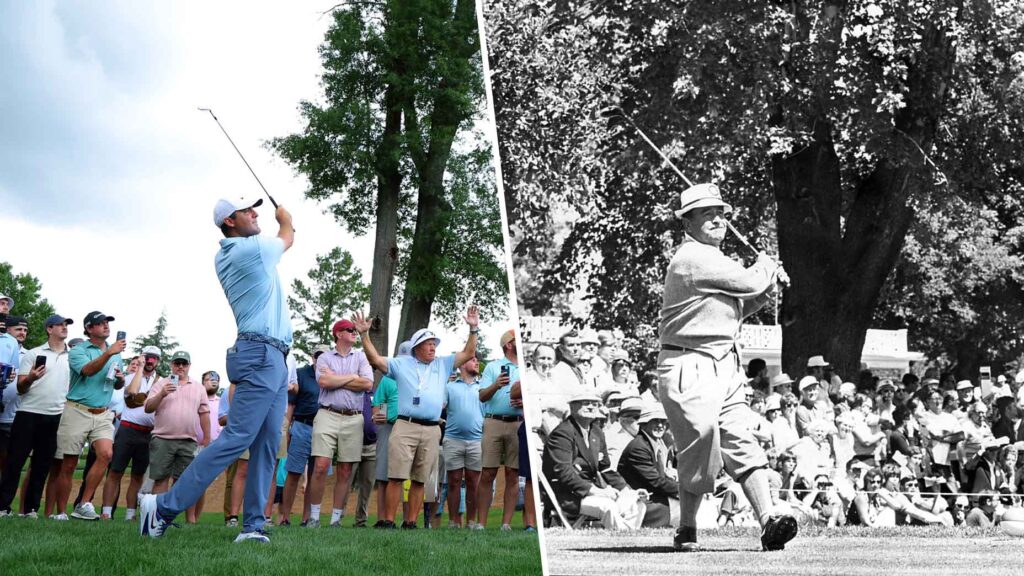Revamping the PGA Championship: A Vision for the Future
By: Sean Zak
Published: May 13, 2025
Introduction: The PGA Championship’s Historical Context
The PGA Championship, a cornerstone of professional golf, has faced numerous challenges throughout its history. Back in 1957, organizers grappled with a significant financial deficit of $9,000, equivalent to around $100,000 today. This moment marked a pivotal shift as the PGA of America transitioned from a match-play format to stroke play. This change led to a lack of a consistent identity for the tournament that persists even today, making it crucial to reevaluate its structure and presentation.
The Identity Crisis
Fast forward to 2025; the PGA Championship stands as the most unpredictable of the four men’s majors. Its winning scores are highly variable, and the range of courses played complicates its branding. While events like the Masters and the U.S. Open are synonymous with specific themes, the PGA often lacks a definitive character. This ambiguity reflects in player preferences, with many aspiring golfers prioritizing other majors over the PGA. The time has come for a comprehensive rebranding to restore its significance.
Envisioning a New Mood Board
Creating a cohesive identity for the PGA Championship can enhance its appeal. Unlike the Masters, known for its springtime charm and the iconic green jacket, or the U.S. Open, synonymous with prestigious venues like Pinehurst and Oakmont, the PGA must cultivate its unique atmosphere. A mood board featuring vibrant designs and themes that resonate with both players and fans could significantly enhance engagement. By capturing the imagination, the PGA can reclaim its status among major tournaments.
Bringing Back the Gauntlet
The PGA Championship’s current format does not evoke the intense competition of yesteryears. To reinstate that spirit, reimagining the tournament as a grueling gauntlet is essential. The proposal involves starting the PGA Championship on Wednesday, allowing for two stroke-play rounds. This shift would introduce a more demanding competition format, where players must fight for survival over 36 holes before the field narrows to 32, paving the way for match play.
Historical Precedents
Historically, major championships featured thrilling match-play formats that tested players’ endurance and skill. In the 1941 PGA Championship, Byron Nelson played an astonishing 176 holes throughout the tournament, showcasing the stamina required to compete at such a level. Reviving this grueling format could attract fans nostalgic for the sport’s rich history while pushing modern competitors to showcase their mental and physical resilience.
A Dynamic Friday Match Play
The revised PGA Championship would transform Fridays into a battleground of 16 matches, aligning the top-ranked players against their lower-seeded counterparts. This structure would not only heighten the stakes but also reignite the anticipation of match play within the community. It offers an opportunity to witness thrilling head-to-head confrontations, reminiscent of those historic moments where underdog victories reshaped narratives.
Uniqueness in a Crowded Calendar
In an era where most tournaments mirror traditional formats, the PGA Championship can differentiate itself by incorporating match play. This element has been largely absent from the current Tour calendar and is an ideal opportunity to showcase the skill and strategy of each competitor. The chance to see marquee matchups, like Tony Finau against Rory McIlroy, would undoubtedly draw interest, creating memorable moments for the fans.
The Path to the Final Four
As players progress through the newly structured matches, the path to the Final Four would take center stage in the sports world. The culmination of intense competition and strategic plays would not only reward the last remaining competitors but also heighten the thrill of the event. This shift will turn the PGA Championship into a spectacle that captures audiences’ imagination and keeps them engaged.
Building a New Legacy
This reimagined PGA Championship is not merely about the tournament’s format; it’s about crafting a legacy that resonates with both players and fans. By incorporating demanding structures and fostering an environment where the best golfers can showcase their talents, the championship can emerge as a revered event in the golfing calendar. With this adjustment, the PGA can reestablish itself as a premier destination for golf enthusiasts.
Conclusion: The Future Awaits
Reinventing the PGA Championship is not just a necessity; it’s a responsibility to the sport and its players. By embracing change, the PGA can enhance its identity and solidify its position as a unifying force in the world of golf. As we look to the future, the proposed transformations promise a renewed vigor and excitement reminiscent of golf’s glorious past. With challenges ahead, the PGA Championship holds the potential to redefine excellence in professional golf.
By focusing on your search-engine optimization (SEO) strategies—using keywords like "PGA Championship," "golf tournaments," "match play," and "golf history"—this article aims to enhance visibility on search platforms while delivering insightful content for avid golf fans.


